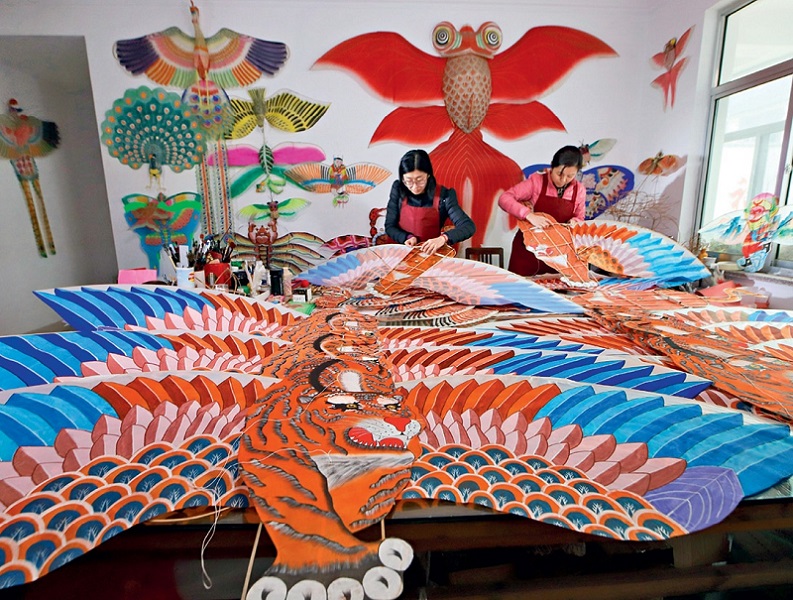
Two artisans assemble Weifang kites.
Weifang City of east China’s Shandong Province is located in the central part of the Shandong Peninsula, bordering the Bohai Sea to the north and the Yellow Sea to the south. In springtime, the region sees little rainfall yet many windy days, with a single prevailing wind direction and minimal turbulence — an environmental condition ideal for kite flying.
Weifang has thus developed a vibrant kite culture, dating back to early Ming Dynasty (1368-1644). By that time, woodblock printing techniques had spread to Weifang. During the slack farming season in spring, villagers used the paper and pigments designed for woodblock prints to paint and make kites. Originally made for personal enjoyment or gifts, kites evolved into a signature commercial product of the region. By the early Qing Dynasty (1644-1911), kite making had become a major local handicraft industry.
During the Ming Dynasty, Weifang kites were mainly flat and two dimensional. Later, they gradually evolved into more types and shapes: bow kites, train kites (reaching over 360 meters), frameless kites, and box kites.
A typical Weifang kite cover, painted in vivid colors, usually assumes varied, captivating shapes — human figures, plants, animals, or mystical beasts — and is supported by a meticulously-crafted symmetrical frame, built with only three to seven bamboo strips. Its skeleton seems simple but is designed for flying well. This time-honored craft was added to China’s first list of national intangible heritage items in 2006.
Weifang kites, rooted in its centuries-old tradition, continue to thrive in the modern era. Today, the total output of Weifang kites and related industries exceeds RMB 2 billion annually, with a production of more than 120 million kites. Many of them are exported to over 50 countries and regions including Europe, America, and Southeast Asia, accounting for more than 85 percent of the international market and over 80 percent of the domestic market. Notably, this industry creates 100,000 jobs. Every April, the Weifang International Kite Festival — an event dubbed by netizens as a “human imagination contest” — is held, where kites of various shapes dazzle crowds of spectators from China and other countries as they soar through the skies.